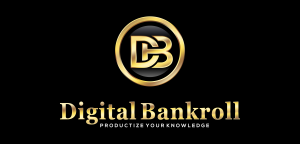One of the most effective ways to foster financial literacy among teens is through reading finance books tailored to their age group. In this article, we’ll explore the importance of financial literacy for teens and delve into some of the best finance books available to help them build a strong foundation for their financial future.
Why Financial Literacy is Important for Teens
Financial literacy is a critical life skill that enables individuals to make informed decisions about their money, from budgeting and saving to investing and managing debt. For teens, developing financial literacy early on can have a profound impact on their future financial well-being. Here are some reasons why financial literacy is essential for teens:
- Building healthy financial habits: By learning about personal finance at a young age, teens can develop positive financial habits that will serve them well throughout their lives, such as budgeting, saving, and avoiding unnecessary debt.
- Preparing for the future: As teens transition into adulthood, they’ll face numerous financial challenges, such as paying for college, managing student loans, and navigating the job market. Financial literacy can help them make informed decisions and plan for their future goals.
- Avoiding financial pitfalls: Without a solid understanding of personal finance, teens may be more susceptible to financial scams, predatory lending practices, and other financial pitfalls. Financial literacy can help them recognize and avoid these risks.
- Fostering independence: By learning how to manage their money effectively, teens can gain a sense of financial independence and self-sufficiency, which can boost their confidence and self-esteem.
Now, let’s explore some of the best finance books for teens that can help them build a strong foundation in personal finance.
“I Will Teach You to Be Rich” by Ramit Sethi
“I Will Teach You to Be Rich” is a comprehensive guide to personal finance that’s written in a relatable and engaging style. While not specifically targeted at teens, Sethi’s book is an excellent resource for young adults who are just starting to navigate the world of personal finance. The book covers a wide range of topics, including:
- Creating a budget and sticking to it
- Saving and investing for the future
- Managing credit and debt
- Negotiating salaries and bills
- Automating your finances for long-term success
Sethi’s approach is practical and action-oriented, with step-by-step guidance on how to implement his strategies in your own life. He also challenges many common myths about personal finance, such as the idea that you need to be an expert to invest successfully.
“Why Didn’t They Teach Me This in School?” by Cary Siegel
“Why Didn’t They Teach Me This in School?” is a concise and accessible guide to personal finance that’s specifically targeted at teens and young adults. Siegel, a retired business executive, shares 99 principles and lessons that he wishes he had learned in school, covering topics such as:
- Setting financial goals and creating a budget
- Understanding credit and managing debt
- Saving and investing for the future
- Navigating taxes and insurance
- Making smart career choices
Siegel’s book is organized into short, easy-to-digest chapters, each with practical tips and real-life examples. He emphasizes the importance of starting early and making smart financial decisions, even with limited resources.
“The Motley Fool Investment Guide for Teens” by David and Tom Gardner
“The Motley Fool Investment Guide for Teens” is a comprehensive introduction to investing that’s specifically tailored to young readers. The Gardner brothers, who founded the popular investment website The Motley Fool, share their insights and strategies for building long-term wealth through investing. The book covers topics such as:
- Understanding the stock market and how it works
- Evaluating companies and selecting investments
- Managing risk and diversifying your portfolio
- Avoiding common investing mistakes
- Developing a long-term investing mindset
The Gardeners use a combination of humor, anecdotes, and real-world examples to make complex financial concepts accessible and engaging for teen readers. They emphasize the importance of starting early, investing regularly, and taking a patient, long-term approach to building wealth.
“How to Turn $100 into $1,000,000” by James McKenna
“How to Turn $100 into $1,000,000” is a fun and engaging guide to personal finance and entrepreneurship for teens. McKenna, a successful entrepreneur and investor, shares his strategies for building wealth and achieving financial independence at a young age. The book covers topics such as:
- Developing an entrepreneurial mindset
- Starting a business or side hustle
- Saving and investing for the future
- Avoiding common financial mistakes
- Leveraging compound interest to build wealth over time
McKenna’s book is filled with real-life examples, case studies, and practical tips for teens who want to take control of their financial future. He emphasizes the importance of taking calculated risks, learning from failure, and persevering in the face of challenges.
“Broke Millennial” by Erin Lowry!
“Broke Millennial” is a relatable and engaging guide to personal finance for young adults. While not specifically targeted at teens, Lowry’s book is an excellent resource for older teens who are preparing to enter the workforce or head off to college. The book covers topics such as:
- Creating a budget and sticking to it
- Managing student loans and other debt
- Negotiating salaries and benefits
- Saving and investing for the future
- Navigating the gig economy and side hustles
Lowry’s writing style is frank, funny, and relatable, with plenty of real-life examples and anecdotes from her own experiences as a broke millennial. She emphasizes the importance of developing a healthy relationship with money and making smart financial decisions, even in the face of financial challenges.
Other Recommended Finance Books for Teens
While the books listed above are some of the best finance books for teens, there are many other excellent resources available. Here are a few additional recommendations:
- “The Teenage Investor” by Timothy Olsen
- “The Complete Guide to Personal Finance for Teenagers and College Students” by Tamsen Butler
- “O.M.G. Official Money Guide for Teenagers” by Susan Beacham and Michael Beacham
- “Not Your Parents’ Money Book” by Jean Chatzky
- “Rich Dad Poor Dad for Teens” by Robert T. Kiyosaki
These books offer a range of perspectives and approaches to personal finance, from investing and entrepreneurship to budgeting and money management. By exploring a variety of resources, teens can find books that resonate with their individual learning styles and financial goals.
Tips for Choosing the Right Finance Book for Teens
With so many finance books available for teens, it can be challenging to know where to start. Here are some tips for choosing the right finance book for your teen:
- Consider your teen’s age and maturity level: Some finance books are geared towards younger teens, while others are more appropriate for older teens and young adults. Choose a book that matches your teen’s age and maturity
please complete level to ensure that the content is both engaging and appropriately challenging.
- Look for books with practical, actionable advice: The best finance books for teens offer concrete, step-by-step guidance on how to implement financial strategies in real life. Look for books that provide practical tips and real-world examples that your teen can easily relate to and apply.
- Choose books with engaging, relatable writing styles: Teens are more likely to absorb and retain financial information if it’s presented in a way that’s engaging, relatable, and even entertaining. Look for books that use humor, anecdotes, and real-life examples to make complex financial concepts more accessible and memorable.
- Consider your teen’s specific interests and goals: Some finance books focus more on investing and entrepreneurship, while others emphasize budgeting and money management. Consider your teen’s individual interests and long-term financial goals when selecting a book.
- Encourage your teen to explore multiple resources: No single book can provide a complete education in personal finance. Encourage your teen to read multiple books, as well as explore other resources such as websites, podcasts, and educational programs to gain a well-rounded understanding of financial concepts.
How Parents and Educators Can Support Teen Financial Literacy
In addition to encouraging teens to read finance books, there are many other ways that parents and educators can support teen financial literacy. Here are some ideas:
- Model healthy financial behaviors: Parents can set a positive example for their teens by modeling healthy financial behaviors such as budgeting, saving, and avoiding unnecessary debt. Be open and transparent about your own financial decisions and challenges, and encourage your teen to ask questions and participate in financial discussions.
- Provide hands-on learning opportunities: Give your teen opportunities to practice managing money in real-life situations, such as through an allowance, part-time job, or entrepreneurial venture. Encourage them to create a budget, track their spending, and save for long-term goals.
- Incorporate financial literacy into the curriculum: Educators can support teen financial literacy by incorporating financial concepts into the curriculum, such as through math problems, case studies, and project-based learning activities. Many organizations, such as the Jump$tart Coalition and the National Endowment for Financial Education, offer free resources and lesson plans for teaching financial literacy in the classroom.
- Encourage participation in extracurricular programs: Encourage your teen to participate in extracurricular programs and competitions that focus on financial literacy and entrepreneurship, such as Junior Achievement, DECA, and the National Economics Challenge.
- Discuss financial news and current events: Help your teen stay informed about financial news and current events by discussing relevant topics such as the stock market, economic trends, and consumer protection issues. Encourage them to think critically about the information they encounter and to ask questions about concepts they don’t understand.
Conclusion
Financial literacy is a critical life skill that can have a profound impact on teens’ long-term financial well-being. By reading finance books and exploring other educational resources, teens can build a strong foundation in personal finance and develop the knowledge and skills necessary to make informed financial decisions.
As parents and educators, we have a responsibility to support teen financial literacy by providing access to quality resources, modeling healthy financial behaviors, and creating opportunities for hands-on learning and real-world application. By working together to prioritize financial education, we can empower the next generation to achieve financial security and success.
ALSO READ: How to Get Your First Teaching Job With No Experience
FAQs
It’s never too early to start teaching kids about money, but most experts recommend introducing more advanced financial concepts, such as budgeting, saving, and investing, around age 13-14.
Yes, books like “The Teenage Investor” by Timothy Olsen and “Rich Dad Poor Dad for Teens” by Robert T. Kiyosaki focus specifically on entrepreneurship and investing for teenage readers.
Try selecting books with engaging, relatable writing styles and practical, real-world examples that your teen can easily connect with. You can also incentivize reading by offering rewards or privileges for completing finance books or discussing key concepts as a family.
Yes, there are many excellent online resources and apps available to support teen financial literacy, such as Mint, FamZoo, and the JumpStart Reality Check. These tools can provide hands-on practice with budgeting, saving, and investing concepts.
Most finance books for teens will specify a target age range in the book description or on the back cover. You can also read reviews from other parents and educators to get a sense of the book’s content and difficulty level. When in doubt, choose a book that’s slightly above your teen’s current level to provide an appropriate challenge and room for growth.




